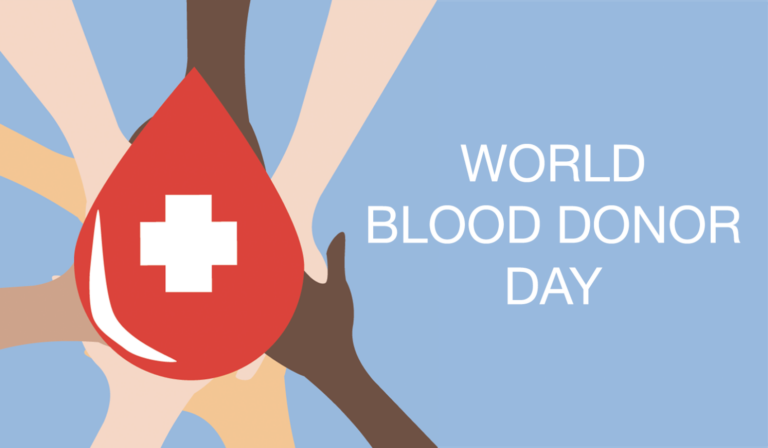Today is World Blood Donor Day, and our team is proud to spread awareness about the immense effects donors have on lives all over the globe (starting right here in our office). It fits that this occasion would fall within the same period as National Cancer Survivor Month and World Sickle Cell Day (June 19), as both of these patient populations need – and thrive – on blood donations. Below, Cancer Sherpa contributor Ronny Bachrach shares what the blood donation process is like, and demonstrates the impact that donors have right in her home.
Have you ever considered donating blood but just haven’t gone through with it, for one reason or another? Since the pandemic began in 2020, the US has experienced varying degrees of blood shortages, with the first-ever blood crisis declared by the Red Cross in January of 2022.
It’s really easy, relatively painless (disclaimer, I have diabetes and needles do not phase me), doesn’t take too long, and can save someone’s life. I’m not even exaggerating.
Blood products help a spectrum of different people in different healthcare environments such as the operating room, inpatient settings, and infusion clinics. Patients can include those with cancer or blood disorders whose blood counts are depleted from disease and/or treatment, as well as victims of trauma, people undergoing routine surgery, individuals with chronic illness or immune deficiencies, among many others.
How to get started
First, consider where you might want to donate. Is there a hospital nearby? When in doubt, check the Red Cross website. When considering donation, there are a few different blood products to consider like plasma, platelets, and double red cells – but I’ll be focusing on a standard red blood cell donation.
Have you recently gotten a tattoo? What medications are you currently on? Have you recently traveled to a particular country or had specific illnesses? Could you be pregnant? What’s your current weight? There are also several questions within the guidelines that are specific to sexual behavior and partners, as well as travel to specific countries in particular years. It’s important to check the most up-to-date information before you make your appointment; particularly because restrictions have recently been changing for same-sex sexual partners and travel/residence in the UK.
What to expect
Once you verify your eligibility and make your appointment, make sure you stay hydrated and have a good meal beforehand. Upon arrival, they’ll do some basic vitals like check your temperature, blood pressure, and a quick finger stick to check your hemoglobin. The actual blood donation process is really short – about ten minutes – and they take approximately half a liter of blood. You can hang out afterward and have a snack to make sure you’re feeling well enough to get up and leave. They also instruct you to take it easy for the rest of the day and to make sure to continue to drink lots of water.
In my experience, I’ve always felt perfectly fine afterward and was able to leave immediately following the donation. Before you leave, make sure you make a note of the next time you can donate. With red blood cell donations, you can give every 56 days. Donation frequency and guidelines vary by blood product being donated.
Why I donate
I donate blood at the local children’s hospital where my daughter is treated. She receives a blood product called IVIG every three weeks, which is made from plasma donations. She has Systemic Juvenile Idiopathic Arthritis and the treatment helps to address inflammation while also offering prophylactic immune support by providing antibodies from donors’ blood. We are extremely grateful to all those that donate, and I know some people can credit their lives to the generosity of others donating their blood.
For help finding a blood donation center, contact Cancer Sherpa today.

